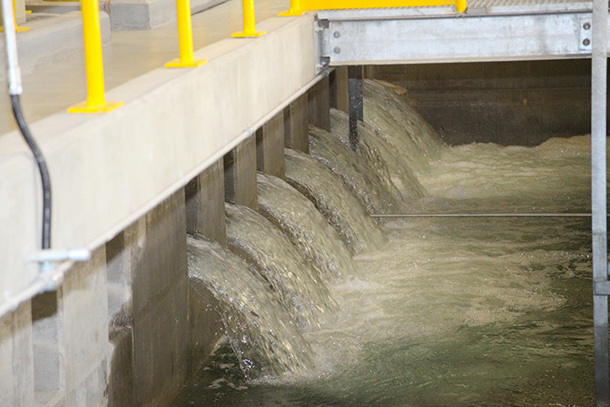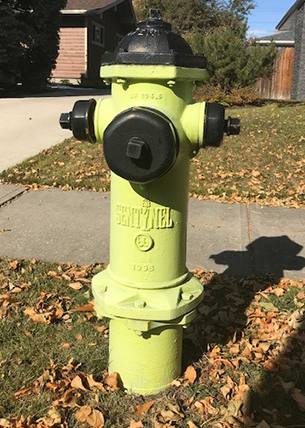Water Treatment & Supply plan and budget
This is a highly regulated, essential and health-focused service that ensures reliable access to safe, high-quality drinking water for Calgarians now and for generations to come. Water Treatment & Supply protects public health and ensures long-term sustainability of our most valuable natural water resources.
Plants, pipes, pumps and people work 24/7, 365 days a year through evenings, weekends, and emergencies to protect public health by providing clean drinking water for over 1.3 million customers in Calgary and the region. Calgarians are able to turn on the tap and receive safe, clean, affordable drinking water thanks to dedicated teams of experts and forward-thinking investments.
Our customers
- All people who use water in the Calgary region.
- Residential users
- Commercial customers (e.g., hotels and restaurants)
- Hospitals
- Schools
- Industrial customers (e.g., food producers).
Our partners
- Non-governmental organizations
- Community groups
- Education partners
- Research partners (Universities, Alberta Innovates)
- Government agencies (AHS, Alberta Environment & Parks)
- Upstream/downstream municipalities
- River users and infrastructure operators
- City services (Fire, Emergency Management, Roads, Parks)
- Developers
- Regional municipalities
- Calgary Metropolitan Regional Board
Value to Calgarians
- Provides the foundation for economic, social, and climate resiliency for all Calgarians.
- The reliable delivery of safe, clear, good tasting and smelling water supports public health, allows businesses to thrive, and provides fire protection.
- The confluence of the Bow and Elbow rivers has always been a place where people gathered and built community around our two safe water supplies.
- Protecting and managing the health of our rivers today ensures high-quality water is available for future generations.
- As Calgary's population continues to grow, so does the demand on our rivers.
- Since we have a finite supply of water, we need to use it wisely to ensure we have enough to meet our future water needs.
- Calgarians are committed to water efficiency and protecting our rivers, and we play a leadership role in supporting Calgarians and businesses to reduce their water consumption.
What we deliver
- High-quality drinking water that is safe to drink and aesthetically pleasing, delivered right to a customer's tap.
- System reliability through investment and proactive maintenance.
- Service restoration when disruptions occur.
- Watershed protection and future planning.
Budget breakdown
Operating and capital budgets explained
The budgets you see here are expenditures net of recoveries.
The City develops two budgets to create impact aligned with Council’s Strategic Direction:
- The four-year (2023-2026) operating plans and budgets
- The five-year (2023-2027+) capital plans and budgets
The operating budget includes revenues, recoveries and spending related to ongoing operations. These include:
- Salaries, wages and benefits.
- Day to day programs, maintenance and services.
- Administration costs (e.g., insurance).
- Fuel
- Utilities
- Capital financing costs.
The City's total net operating budget is zero. This means we budget to collect the revenue needed to deliver services to Calgarians — no more, no less. We collect this revenue through property taxes and other sources.
The capital budget pays for long-lived assets. These provide the foundation for the services Calgarians rely on. They include:
- Maintenance of current infrastructure (e.g., bridges, buildings and playgrounds).
- Upgrades to existing community infrastructure.
- New infrastructure to provide services in areas that are underserved (e.g., Green Line).
- New infrastructure for growing areas of the city.
Learn more about our 2023-2026 Service Plans and Budgets.
See how the budget has been adjusted since November 2022
Measuring performance
We are measuring our performance in five areas. Each value is the goal we expect to reach by 2026.

What we've heard
We prioritize understanding our customers’ values, priorities and service expectations to develop levels of service, guide continuous improvement, and inform long-term planning. Our customers’ top priorities are safe, reliable, and aesthetically pleasing drinking water and ensuring sufficient supply for future demand.
Based on our research so far, nearly half of customers believe no instance of safety risk to their drinking water to be acceptable. Customers expect a low risk of experiencing a service interruption and most expect instances of taste or appearance issues to be infrequent, occurring only 1-3 times per year.
When service is unavailable, customers want timely, accurate information and information on what they are responsible for as either a homeowner or business/property owner. Customers expect us to deliver this and more at a fair price, with predictable and accurate billing.
Participate and view results of City researchWhat we're watching
- We are updating our performance measures to include reporting on water aesthetics, take a holistic view of service reliability and inform our response to outages and emergencies.
- High-quality drinking water is dependent on system capability and performance as well as demand.
- Climate change will impact the frequency of flood and drought, affect source water quality and availability, and put pressure on our ability to deliver a service that meets customer expectations.
- Water supply and demand will need to be effectively managed, water storage capacity will become increasingly important, and our approach to treating drinking water may need to adjust with additional tools.
- Changing regulatory expectations and impacts to our operations mean that flexibility in service planning and delivery is required.
- Underpinning everything, we must monitor to ensure our service remains equitable and affordable for everyone.

Our initiatives
What we plan to do
We are investing to improve levels of service and reliability of infrastructure. Maintenance and replacement programs will help ensure customers do not experience main breaks or interrupted service. We are responding to climate change through risk management and system resilience evaluation.
How we're going to get there
- Reduce potential risks (Emerging Substances of Concern, Distribution Monitoring Program, Lead Servicing Replacement, Dead End Mains) by continuing to deliver on water quality investments and programs and implementing best practices.
- Protect Calgary's source water by continuing to work within the region to establish a governance framework to have an aligned regional growth plan.
- Reduce the risks associated with source water entering the water treatment plant on the Elbow River by implementing the Glenmore Reservoir source water protection plan.
- Reduce long-term system reliability risks through continued exploration of water licensing and plant expansion, while implementing programs that influence timing of sizeable investments (e.g. water restrictions, water loss program, Water Efficiency Plan, graduated water rates).
- Maintain service resilience through ensuring appropriate resources including competent and certified operators to maintain regulatory compliance and operate a growing water treatment and distribution system network (two treatment facilities, two raw and 23 treated water reservoirs, Glenmore and Bearspaw dams, 41 pump stations, 17,000 hydrants and over 5000 km of underground pipes).

